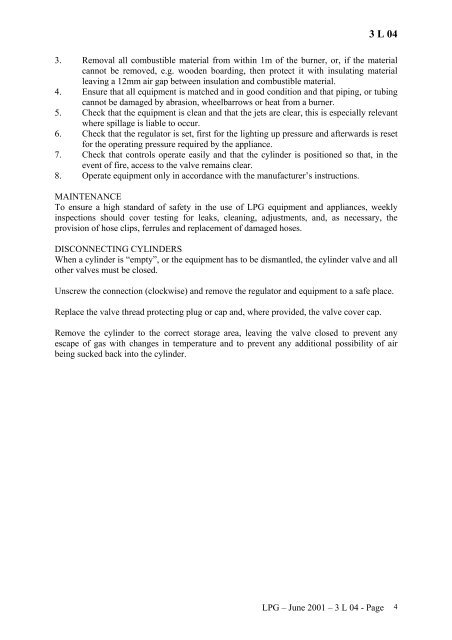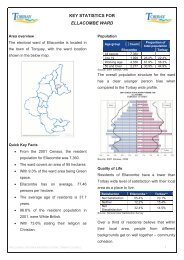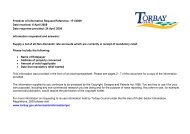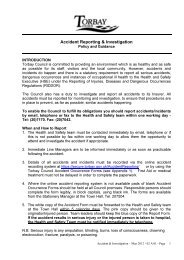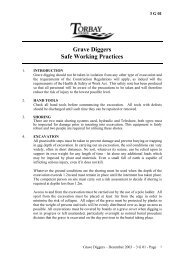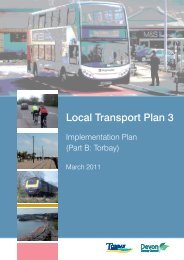Liquefied Petroleum Gas (LPG) Safe Working Practices
Liquefied Petroleum Gas (LPG) Safe Working Practices
Liquefied Petroleum Gas (LPG) Safe Working Practices
Create successful ePaper yourself
Turn your PDF publications into a flip-book with our unique Google optimized e-Paper software.
3 L 04<br />
3. Removal all combustible material from within 1m of the burner, or, if the material<br />
cannot be removed, e.g. wooden boarding, then protect it with insulating material<br />
leaving a 12mm air gap between insulation and combustible material.<br />
4. Ensure that all equipment is matched and in good condition and that piping, or tubing<br />
cannot be damaged by abrasion, wheelbarrows or heat from a burner.<br />
5. Check that the equipment is clean and that the jets are clear, this is especially relevant<br />
where spillage is liable to occur.<br />
6. Check that the regulator is set, first for the lighting up pressure and afterwards is reset<br />
for the operating pressure required by the appliance.<br />
7. Check that controls operate easily and that the cylinder is positioned so that, in the<br />
event of fire, access to the valve remains clear.<br />
8. Operate equipment only in accordance with the manufacturer’s instructions.<br />
MAINTENANCE<br />
To ensure a high standard of safety in the use of <strong>LPG</strong> equipment and appliances, weekly<br />
inspections should cover testing for leaks, cleaning, adjustments, and, as necessary, the<br />
provision of hose clips, ferrules and replacement of damaged hoses.<br />
DISCONNECTING CYLINDERS<br />
When a cylinder is “empty”, or the equipment has to be dismantled, the cylinder valve and all<br />
other valves must be closed.<br />
Unscrew the connection (clockwise) and remove the regulator and equipment to a safe place.<br />
Replace the valve thread protecting plug or cap and, where provided, the valve cover cap.<br />
Remove the cylinder to the correct storage area, leaving the valve closed to prevent any<br />
escape of gas with changes in temperature and to prevent any additional possibility of air<br />
being sucked back into the cylinder.<br />
<strong>LPG</strong> – June 2001 – 3 L 04 - Page 4


